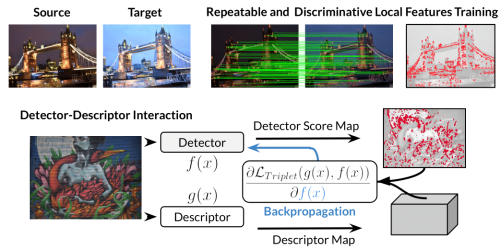Patch SVDD: Patch-level SVDD for Anomaly Detection and Segmentation
Jihun Yi (Seoul National University), Sungroh Yoon (Seoul National University)*
Keywords: Applications of Computer Vision, Vision for X
Abstract:
In this paper, we address the problem of image anomaly detection and segmentation. Anomaly detection involves making a binary decision as to whether an input image contains an anomaly, and anomaly segmentation aims to locate the anomaly on the pixel level. Support vector data description (SVDD) is a long-standing algorithm used for an anomaly detection, and we extend its deep learning variant to the patch-based method using self-supervised learning. This extension enables anomaly segmentation and improves detection performance. As a result, anomaly detection and segmentation performances measured in AUROC on MVTec AD dataset increased by 9.8% and 7.0%, respectively, compared to the previous state-of-the-art methods. Our results indicate the efficacy of the proposed method and its potential for industrial application. Detailed analysis of the proposed method offers insights regarding its behavior, and the code is available online.
SlidesLive
Similar Papers
HDD-Net: Hybrid Detector Descriptor with Mutual Interactive Learning
Axel Barroso-Laguna (Imperial College London)*, Yannick Verdie (Huawei Noah's Ark Lab), Benjamin Busam (Technical University of Munich), Krystian Mikolajczyk (Imperial College London)

Modeling Cross-Modal interaction in a Multi-detector, Multi-modal Tracking Framework
Yiqi Zhong (University of Southern California)*, Suya You (US Army Research Laboratory), Ulrich Neumann (USC)

SDP-Net: Scene Flow Based Real-time Object Detection and Prediction from Sequential 3D Point Clouds
Yi Zhang (Zhejiang University), Yuwen Ye (Zhejiang University), Zhiyu Xiang (Zhejiang University)*, Jiaqi Gu (Zhejiang University)
